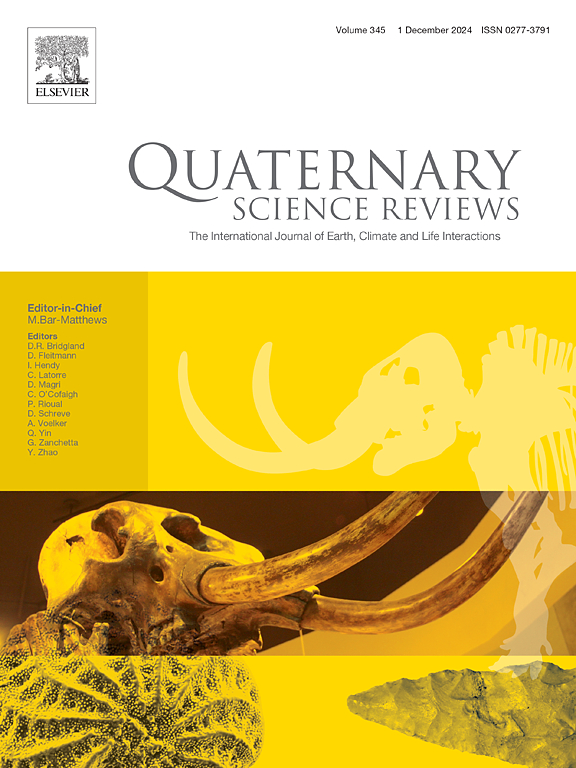10Be records of the Matuyama-Brunhes polarity reversal in the northeastern Chinese loess Plateau
IF 3.2
1区 地球科学
Q1 GEOGRAPHY, PHYSICAL
引用次数: 0
Abstract
The precise stratigraphic position of the Matuyama-Brunhes (M-B) geomagnetic polarity reversal within Chinese loess sequences and its asynchrony with marine records have been long debated. This uncertainty limits our ability to establish a reliable geochronology for Chinese loess sequences and precise land-sea correlation of paleoclimate records. Here we present the high-resolution 10Be results across the M-B boundary for the Fanshan loess profile in the northeastern Chinese Loess Plateau, for which previous high-stratigraphic-resolution paleomagnetic measurements failed to detect the exact position of the M-B boundary. A major enhancement of the 10Be content (representing an increased atmospheric 10Be production rate) in the upper part of paleosol S7 unambiguously represents the M-B boundary. The estimated age of 773 ± 3 ka for this boundary is consistent with 10Be-inferred age of the M-B boundary in the EPICA Dome C ice core, marine sediment cores, and in the classic Luochuan loess sequence. These findings confirm the robustness of 10Be in constraining geomagnetic reversals in Chinese loess sequences, after the effects of climate on 10Be records have been successfully removed.
黄土高原东北部Matuyama-Brunhes极性反转的记录
中国黄土层序中Matuyama-Brunhes (M-B)地磁极性反转的精确地层位置及其与海相记录的非同步性一直争论不休。这种不确定性限制了我们建立可靠的中国黄土序列年代学和精确的古气候记录海陆对比的能力。本文介绍了中国黄土高原东北部樊山黄土剖面的高分辨率10Be结果,该剖面以往的高地层分辨率古地磁测量未能探测到M-B边界的确切位置。S7古土壤上部10Be含量的显著增加(代表大气10Be生成速率的增加)明确代表了M-B边界。该边界的年龄估计为773±3 ka,与EPICA Dome C冰芯、海相沉积物岩芯和洛川黄土层序中M-B边界的年龄推断一致。这些发现证实了在气候对10Be记录的影响被成功消除后,10Be在约束中国黄土层序地磁倒转方面的稳健性。
本文章由计算机程序翻译,如有差异,请以英文原文为准。
求助全文
约1分钟内获得全文
求助全文
来源期刊

Quaternary Science Reviews
地学-地球科学综合
CiteScore
7.50
自引率
15.00%
发文量
388
审稿时长
3 months
期刊介绍:
Quaternary Science Reviews caters for all aspects of Quaternary science, and includes, for example, geology, geomorphology, geography, archaeology, soil science, palaeobotany, palaeontology, palaeoclimatology and the full range of applicable dating methods. The dividing line between what constitutes the review paper and one which contains new original data is not easy to establish, so QSR also publishes papers with new data especially if these perform a review function. All the Quaternary sciences are changing rapidly and subject to re-evaluation as the pace of discovery quickens; thus the diverse but comprehensive role of Quaternary Science Reviews keeps readers abreast of the wider issues relating to new developments in the field.
 求助内容:
求助内容: 应助结果提醒方式:
应助结果提醒方式:


